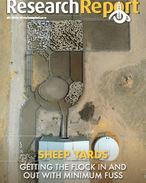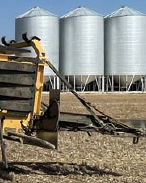This article is 8 years old. Images might not display.
NSW Department of Primary Industries (DPI) plant pathologist Kurt Lindbeck said lupin crops can be grown outside a small zone of infected properties in southern NSW, in line with a five-point management plan.
“We advise all albus and narrowleaf lupin growers to adopt the plan, which aims to reduce opportunities for the establishment and spread of anthracnose,” Lindbeck said.
The five-point plan advises growers to:
- Target seed treatment with thiram fungicide
- Keep this year’s crop separate from 2016 stubble
- Control any volunteer lupin plants
- Manage machinery and people movements into and out of lupin crops
- Apply a foliar fungicide and grass herbicide six to eight weeks after emergence and a follow-up fungicide treatment before canopy closure
Western Australian research, where the disease has been present for 21 years, found foliar fungicides containing mancozeb, chlorothalonil or azoxystrobin were effective in managing the disease, which is caused by the Colletotrichum lupini fungus.
Anthracnose affects only lupins and albus lupins are particularly susceptible to this devastating disease.
Lindbeck said anthracnose can develop at all crop stages, including seedlings.
“Growers and advisers should inspect lupin crops for anthracnose symptoms, which are most obvious when crops start flowering and podding, producing bent and twisted stems to form a shepherd’s crook shape,” he said.
“Stems bend due to lesions, with bright pink to orange spores found in the bend of the crook, which spread through the crop onto growing plant pods and infect developing seed.
“Anthracnose develops in hotspots throughout the crop and can spread by rainsplash.”






















